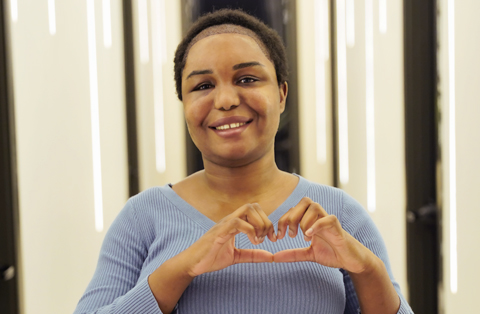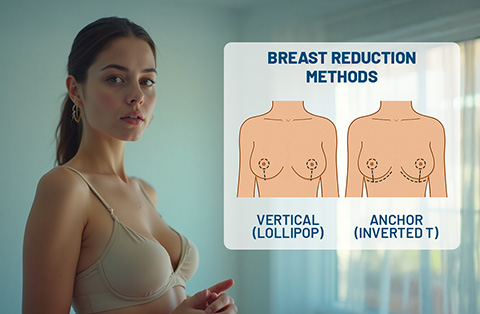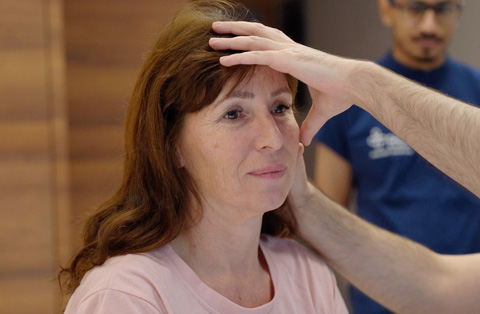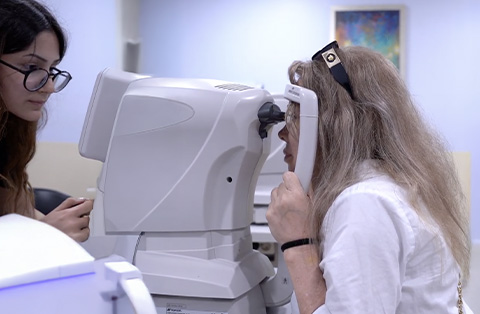Curious about how a tummy tuck holds up over time? While a tummy tuck can deliver dramatic, long-lasting results, many people wonder what changes to expect 20 years later. How will the skin, muscles, and scars look after two decades? Will the results fade, or can you maintain a toned midsection for years to come?
In this article, we'll explore the long-term effects of a tummy tuck and what factors influence how well your results age. Discover what you can expect and how to preserve your tummy tuck results for the long haul.
How do tummy tuck scars change over time?
One of the biggest concerns after a tummy tuck is how the scars will heal and look in the long run. While scars are an inevitable part of any surgery, they tend to change significantly over time.
Understanding the scar healing process can help set realistic expectations and ease worries about their appearance. Let’s explore what happens to tummy tuck scars as they mature, what factors influence scar healing, and how they can become less visible over time.
Tummy tuck scars over time: What to expect
In the first few weeks after surgery, tummy tuck scars are typically red, raised, and somewhat firm. This is a normal part of the healing process.
Over the next few months, the scar will begin to flatten and fade in color, gradually becoming less noticeable. By the 6-12 month mark, most scars have significantly faded and softened, though the full healing process can take up to 2 years.
After two decades, many people find that their tummy tuck scars have become barely visible, blending well with the surrounding skin.
Factors that affect scar healing
Several factors influence how well tummy tuck scars heal over time:
Skin Type: Skin tone and type can play a role in how scars develop. Darker skin tones may be more prone to hyperpigmentation, while fair skin may show redness for a longer period.
Genetics: Some people are genetically predisposed to better or worse scar healing. If you tend to develop keloids or raised scars, it may take longer for your tummy tuck scar to flatten.
Aftercare: Proper post-surgery care, such as keeping the incision clean and avoiding sun exposure, can improve scar healing. Using recommended scar treatments can also minimize scarring.
How scars become less visible?
Tummy tuck scars generally become less visible through a natural healing process where the skin gradually produces collagen to repair the incision. Over time, the body remodels this collagen, leading to a smoother and flatter appearance.
Additionally, treatments like silicone gels, laser therapy, or microneedling can accelerate the fading process. Wearing sunscreen is also essential, as UV exposure can darken scars and slow down their healing.
With proper care and time, most tummy tuck scars will become much less noticeable, leaving behind only a faint reminder of the procedure.
What happens to the belly button after a tummy tuck?
The belly button plays a significant role in the aesthetics of your abdomen, and it often undergoes changes during a tummy tuck procedure.
Since excess skin is removed and the abdominal area is tightened, the surgeon must reposition or reshape the belly button to create a natural look.
Changes in the belly button over the years
Initially, after a tummy tuck, the belly button may appear swollen or distorted, but this is part of the healing process. Over the first few months, the swelling subsides, and the new belly button begins to take its final shape. As years go by, most patients experience minimal changes to the belly button.
However, natural aging, weight fluctuations, and skin elasticity can affect its appearance. Despite these factors, a well-performed tummy tuck generally keeps the belly button looking natural and in place for many years.
Related Articles:
Scar management around the belly button
Since the belly button is typically repositioned during a tummy tuck, there is often a small scar around its edge. This scar tends to fade over time but may be more noticeable in the first few months after surgery. To help manage scarring, many surgeons recommend applying silicone gels or scar creams to the area once it's healed.
Keeping the belly button scar protected from direct sunlight by using sunscreen can also prevent hyperpigmentation, making the scar less noticeable as time passes.
Common issues with belly button post-op
While most patients are satisfied with the appearance of their belly button after a tummy tuck, some common issues can occur. These include:
Belly Button Shape: In some cases, the belly button may look too round or shallow post-op, though experienced surgeons aim to create a natural appearance.
Infection: As with any surgical site, the belly button can be prone to infection, particularly if proper care is not taken during recovery. It's important to keep the area clean and follow post-op care instructions closely.
Scar Concerns: Occasionally, the scar around the belly button may heal poorly, becoming raised or overly visible. Treatments such as laser therapy or microneedling can help improve the appearance of the scar.
By understanding these possible changes and taking steps to manage them, you can ensure your belly button maintains a natural, aesthetically pleasing appearance after a tummy tuck.
What is the best age for a tummy tuck?
A tummy tuck can deliver transformative results, but many wonder if there’s an ideal age for the procedure. While age itself isn’t a strict determining factor, there are important life stages and health considerations that influence the best time to get a tummy tuck.
Factors such as skin elasticity, overall health, and lifestyle play a significant role in determining when you might be ready for this surgery.
Age considerations for a tummy tuck
There is no specific "best" age for a tummy tuck, as candidates vary widely based on individual health and goals.
However, most people opt for the procedure between 35 and 55 years old, after completing major life changes like pregnancy or significant weight loss.
Younger candidates often have better skin elasticity, which can result in quicker recovery and optimal results. However, older individuals in good health can still achieve excellent outcomes, as long as they are medically fit for surgery.
Optimal time for a tummy tuck procedure
The best time to undergo a tummy tuck is typically when you’re done having children and your weight is stable.
Pregnancy and significant weight fluctuations can stretch the abdominal muscles and skin, potentially reversing the effects of the surgery. For this reason, many women choose to wait until they have completed their families before considering a tummy tuck.
Additionally, those who have reached their ideal weight after weight loss find this to be the optimal time for the procedure, as it allows for the removal of excess skin and muscle tightening to achieve a toned midsection.
Post-op considerations: Age vs. recovery
While age is not a direct barrier to a tummy tuck, recovery can differ depending on age and overall health. Younger patients may recover more quickly due to better skin elasticity and muscle tone, whereas older patients may experience a slightly longer recovery period.
That said, older adults in good health can still have smooth recoveries, especially with proper post-op care. Factors such as skin healing, muscle recovery, and post-op complications should be discussed with your surgeon to ensure you’re prepared, regardless of your age.
In short, the "best" age for a tummy tuck depends more on personal readiness, health status, and life circumstances than on a specific number.
How to maintain results from a tummy tuck 20 years later?
A tummy tuck can provide dramatic and long-lasting improvements, but maintaining those results over the years requires ongoing care.
After 20 years, many patients still enjoy a flatter, more toned abdomen, but lifestyle choices, aging, and other factors can affect the outcome. Fortunately, with the right approach, you can preserve your tummy tuck results for decades.
Long-term maintenance tips
To keep your tummy tuck results looking their best over the years, consider these key strategies:
Maintain a stable weight: Significant weight fluctuations can stretch the skin and abdominal muscles, reversing some of the benefits of your tummy tuck. Aim to keep your weight steady through a balanced diet and regular exercise.
Stay active: Incorporating core-strengthening exercises into your fitness routine can help support the muscle repair achieved during your tummy tuck. Activities like Pilates or yoga can improve abdominal tone and overall strength.
Hydrate and moisturize: Staying hydrated helps maintain skin elasticity, while moisturizing the abdominal area can keep the skin smooth and supple, minimizing the effects of aging.
Factors affecting tummy tuck recovery
Several factors can influence the long-term outcome of your tummy tuck:
Aging: Naturally, the skin loses elasticity over time, which may lead to some sagging in the abdominal area. While this is normal, a healthy lifestyle can slow the aging process.
Pregnancy: If you undergo a tummy tuck and then become pregnant, the stretching of the skin and muscles may undo some of the procedure’s effects. It's best to wait until you’re done having children before opting for a tummy tuck.
Health Conditions: Conditions like diabetes or significant weight gain may also impact the results. Managing underlying health issues is essential to keeping your results intact.
How to ensure long-lasting results?
To ensure your tummy tuck results last for 20 years or more, consider these long-term strategies:
Regular Checkups: Periodic follow-ups with your surgeon can help address any concerns and monitor your body’s changes over time. Early detection of issues like muscle separation or skin laxity can lead to timely interventions.
Consistent Healthy Habits: Maintaining a nutritious diet, exercising regularly, and avoiding smoking can promote overall well-being and help prolong the effects of your tummy tuck.
Skin Care: Using sun protection and anti-aging skincare can prevent premature skin aging around the abdominal area, helping your skin remain firm and youthful for years to come.
By following these tips and staying proactive with your health, you can enjoy the benefits of your tummy tuck for decades while maintaining a smooth, toned midsection.
What are common complications years after a tummy tuck?
While a tummy tuck generally provides long-lasting and satisfying results, some complications may arise years after the procedure. It's important to be aware of potential long-term issues, even if the initial recovery went smoothly.
Over time, changes in the body, aging, or lifestyle factors can lead to certain complications that require attention.
Potential issues with tummy tuck scars
Tummy tuck scars, although they tend to fade over time, may still present problems years later. Some common long-term issues include:
Thick or Raised Scars: In some cases, scars can become thicker or develop into keloids, which are raised, hardened scar tissues that can appear years after surgery.
Scar Darkening: Prolonged exposure to sunlight without protection can darken scars over time, making them more visible.
Stretching of the Scar: Weight fluctuations, pregnancy, or aging can stretch the scar, causing it to become wider or more noticeable.
To manage these issues, treatments like laser therapy, silicone sheets, or steroid injections can help reduce scar thickness and improve their appearance, even years after surgery.
Long-term effects on the abdominal wall
Over time, the abdominal muscles and tissues that were tightened during a tummy tuck may weaken due to natural aging, weight gain, or pregnancy. This can lead to:
Muscle Separation (Diastasis Recti): Even years after surgery, the abdominal muscles can separate, leading to a less toned appearance and possible discomfort or back pain.
Hernias: A rare complication is the development of hernias in the abdominal wall, which can occur when the muscle weakens, allowing tissue to push through.
Maintaining core strength through regular exercise and avoiding significant weight gain can help support the abdominal muscles. In severe cases, surgical correction may be needed to repair muscle separation or hernias.
How to address complications years later?
If you experience complications years after your tummy tuck, there are several options to address them:
Revision Surgery: For issues like scar revision, muscle tightening, or fixing stretched skin, a second surgery may be required. Revision tummy tucks can help correct aesthetic or functional concerns that develop over time.
Non-Surgical Treatments: Depending on the complication, non-invasive treatments such as laser therapy for scars, physical therapy for muscle strength, or steroid injections can be effective.
Consultation with a Surgeon: If you notice any long-term changes or discomfort, it’s essential to consult your surgeon for an evaluation. Early detection of complications can prevent them from worsening and help you maintain the best possible results.
In summary, while tummy tuck complications years later are relatively rare, it’s important to monitor your body’s changes and seek professional advice if needed. With proper care and timely interventions, many of these issues can be managed or corrected.






